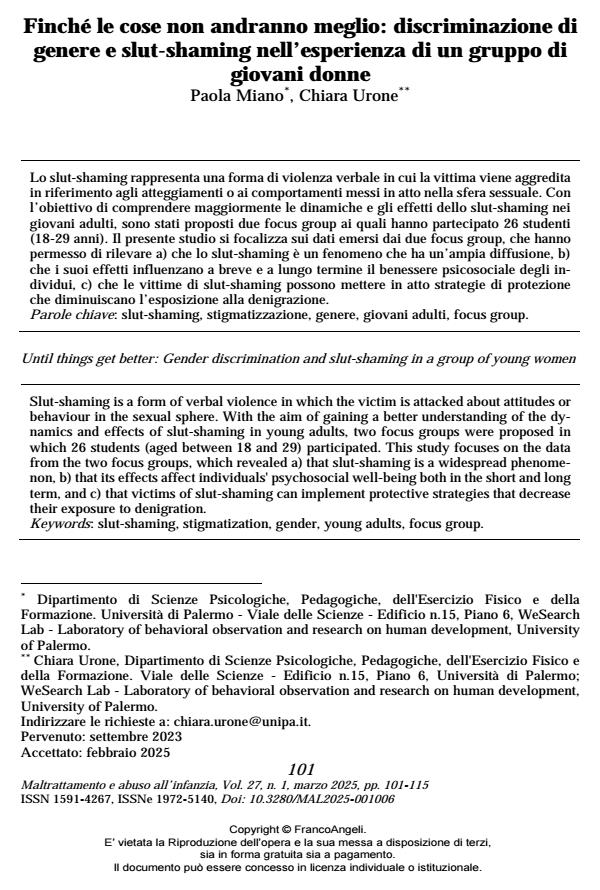Finché le cose non andranno meglio: discriminazione di genere e slut-shaming nell’esperienza di un gruppo di giovani donne
Titolo Rivista MALTRATTAMENTO E ABUSO ALL’INFANZIA
Autori/Curatori Paola Miano, Chiara Urone
Anno di pubblicazione 2025 Fascicolo 2025/1
Lingua Italiano Numero pagine 15 P. 101-115 Dimensione file 65 KB
DOI 10.3280/MAL2025-001006
Il DOI è il codice a barre della proprietà intellettuale: per saperne di più
clicca qui
Qui sotto puoi vedere in anteprima la prima pagina di questo articolo.
Se questo articolo ti interessa, lo puoi acquistare (e scaricare in formato pdf) seguendo le facili indicazioni per acquistare il download credit. Acquista Download Credits per scaricare questo Articolo in formato PDF

FrancoAngeli è membro della Publishers International Linking Association, Inc (PILA)associazione indipendente e non profit per facilitare (attraverso i servizi tecnologici implementati da CrossRef.org) l’accesso degli studiosi ai contenuti digitali nelle pubblicazioni professionali e scientifiche
Lo slut-shaming rappresenta una forma di violenza verbale in cui la vittima viene aggredita in riferimento agli atteggiamenti o ai comportamenti messi in atto nella sfera sessuale. Con l’obiettivo di comprendere maggiormente le dinamiche e gli effetti dello slut-shaming nei giovani adulti, sono stati proposti due focus group ai quali hanno partecipato 26 studenti (18-29 anni). Il presente studio si focalizza sui dati emersi dai due focus group, che hanno permesso di rilevare a) che lo slut-shaming è un fenomeno che ha un’ampia diffusione, b) che i suoi effetti influenzano a breve e a lungo termine il benessere psicosociale degli individui, c) che le vittime di slut-shaming possono mettere in atto strategie di protezione che diminuiscano l’esposizione alla denigrazione.
Parole chiave:slut-shaming, stigmatizzazione, genere, giovani adulti, focus group.
Paola Miano, Chiara Urone, Finché le cose non andranno meglio: discriminazione di genere e slut-shaming nell’esperienza di un gruppo di giovani donne in "MALTRATTAMENTO E ABUSO ALL’INFANZIA" 1/2025, pp 101-115, DOI: 10.3280/MAL2025-001006